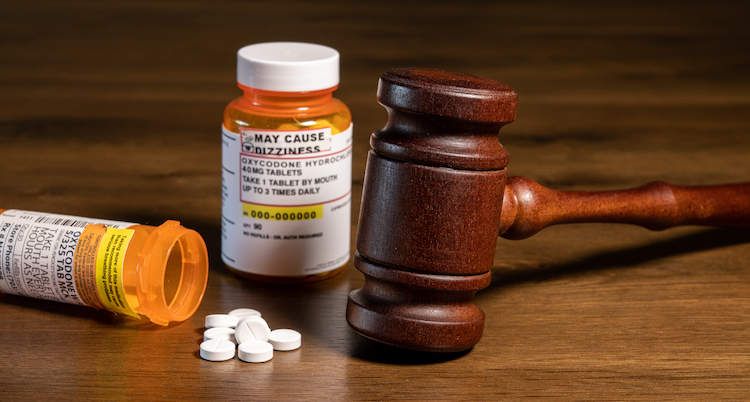3 pharmacy chains found liable in opioid epidemic in Ohio case

Image from Shutterstock.
Federal jurors in Cleveland on Tuesday found that CVS, Walgreens and Walmart are liable for contributing to the opioid epidemic in two Ohio counties.
U.S. District Judge Dan Polster of the Northern District of Ohio will determine damages to be paid to Lake and Trumbull counties in northeastern Ohio after hearings in the spring, report the New York Times, the Washington Post, the Associated Press, Law.com and Reuters.
The verdict is the first against big retail pharmacies in the opioid crisis, according to the New York Times.
Rite Aid and Giant Eagle settled with the Ohio counties before the trial.
In his closing argument for the plaintiffs, lawyer Mark Lanier countered a defense argument that the plaintiffs had not built a bridge connecting all the required elements to prove a public nuisance, according to the New York Times.
Lanier showed jurors a model bridge made of hundreds of Legos. Many things contributed to the opioid crisis, he said. But if you knock out a few of the pieces, everything can fall, he said as he showed the model as it shattered.
The Ohio case is among about 3,000 opioid lawsuits consolidated before Polster alleging that defendants created a public nuisance in the sale and marketing of opioids.
Meanwhile, three drug distributors and drugmaker Johnson & Johnson have proposed paying $26 billion to settle lawsuits against them, according to Reuters. And a bankruptcy judge has approved a $10 billion settlement involving Purdue Pharma, a maker of OxyContin.
Public nuisance claims have failed in two state lawsuits.
The Oklahoma Supreme Court overturned a $465 million verdict against Johnson & Johnson earlier this month, holding that the company’s opioid marketing did not create a public nuisance because it concerned the sale of a lawful product.
Also in November, a California judge said in a tentative ruling a suit by opioid plaintiffs failed because there was no proof showing how many opioid prescriptions were inappropriate and how the volume contributed to a public nuisance.
In a Zoom press conference after the Ohio verdict, plaintiffs lawyer Joe Rice of Motley Rice explained why his clients pursued a public nuisance theory, according to Law.com.
“You gotta start somewhere,” Rice said.
“We can always go back and try a straight negligence or careless standard,” he added. “There’s different ways to proceed with these cases. The public nuisance was the one we chose to proceed with because the court controls the remedy, and there was no risk that any economic recovery would be used for anything other than to abate the opioid epidemic. And that’s what the clients wanted to have happen.”
The public nuisance doctrine will be one issue in an appeal of the Ohio verdict, according to a statement by a Walgreens spokesperson cited by publications covering the verdict.
“The plaintiffs’ attempt to resolve the opioid crisis with an unprecedented expansion of public nuisance law is misguided and unsustainable,” the spokesperson said.
CVS and Walmart also indicated that they would appeal.
Adam Zimmerman, who teaches mass litigation at Loyola Marymount University’s Loyola Law School in Los Angeles, told the New York Times that the opioid litigation has a long road ahead. Each state has its own public nuisance law, which could lead to different outcomes, he said.
“It’s more like there are many different ballgames going on at once, each with slightly different rules, and we’re in the early innings of almost all of them,” he told the New York Times.
See also:
ABA Journal: “Opioids, justice & mercy: Courts are on the front lines of a lethal crisis”



